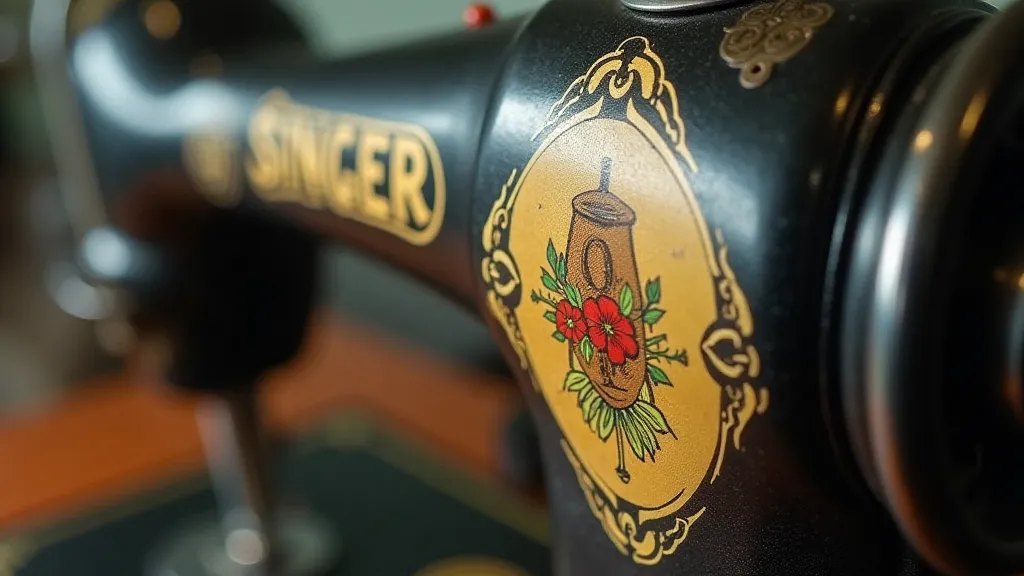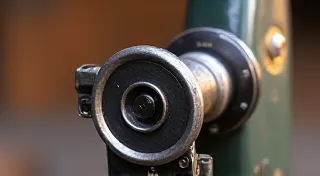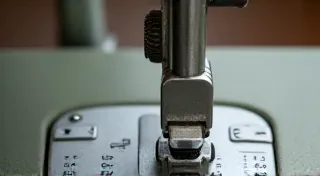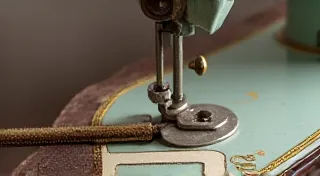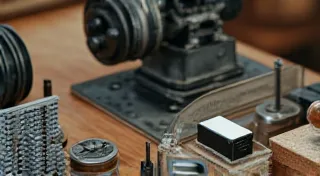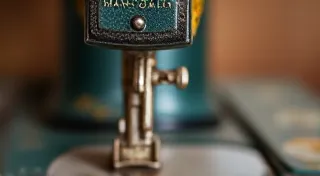The Clockwork Heart: Reanimating a Singer's Lost Rhythm
There's a particular scent that clings to antique Singer sewing machines – a blend of aged metal, dried oil, and the ghost of cotton thread. It’s a fragrance that transcends mere mechanics; it’s a portal to another time. More than just machines, these Singers were instruments of creation, silently witnessing generations craft garments, mend families, and build dreams. Bringing one back to life isn’t simply a matter of technical repair; it’s an act of respectful resurrection, a conversation with the past.
I remember my grandmother’s Singer, a dark, heavy model 66, stationed proudly on a drop-leaf table in her sun-drenched kitchen. It wasn't just a sewing machine; it was a constant hum of creativity, a reliable companion through thick and thin. It mended torn dresses, stitched quilts for newborns, and even helped her create costumes for local theater productions. The machine itself felt imbued with her spirit, a tangible link to a woman who embodied resilience and ingenuity. When she passed, the Singer remained, silent and still, a poignant reminder of her presence.
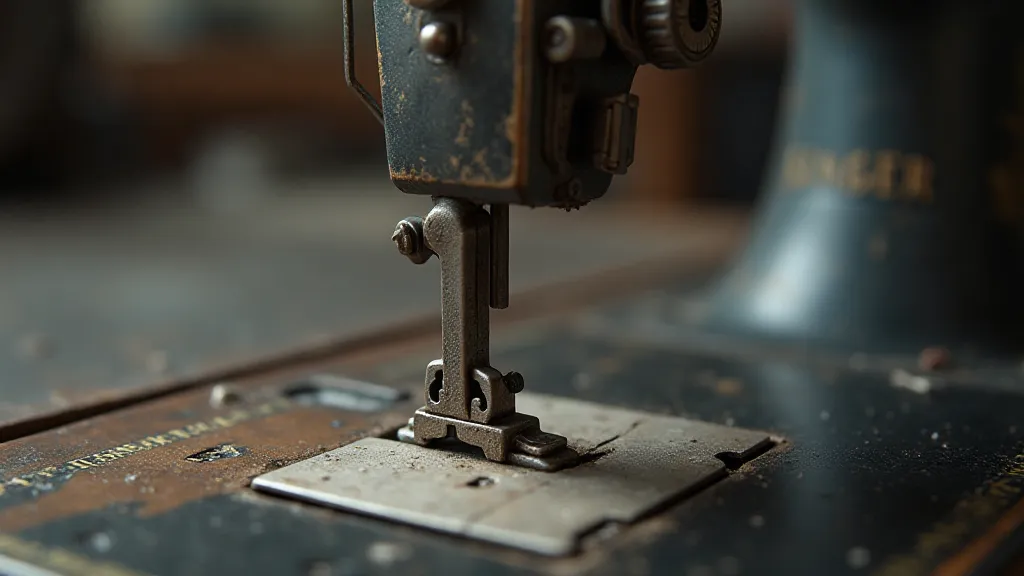
Beyond Gears and Grease: The Weight of History
Most guides to Singer repair focus on the technical: cleaning, lubrication, gear replacement, tension adjustment. And yes, these are crucial steps. A seized mechanism, a broken bobbin race – these are mechanical ailments requiring direct intervention. But the true artistry in restoring antique Singer sewing machines lies in appreciating the larger context. Each machine has a history. They began production during a period of significant industrial growth, a time when mass production began to reshape the world. The Singer Manufacturing Company, founded by Elias Howe and Isaac Merritt Singer, didn't just create a sewing machine; they revolutionized the garment industry and empowered countless individuals, particularly women, by providing them with a means of earning a living.
Consider the era. The late 19th and early 20th centuries saw immense social and technological change. These machines were often the backbone of families, contributing to their livelihoods and allowing them to create beautiful, functional items. The quality of craftsmanship is astonishing; the precision of the gears, the solid construction, the sheer ingenuity of the design speaks volumes about the dedication of the engineers and the skilled laborers who built them. Even a seemingly minor repair – replacing a needle plate, for example – can evoke a profound sense of connection to that past. You're handling the same parts, potentially the same design, that a craftsman handled over a century ago. For those new to the intricacies of vintage Singer restoration, resources like a detailed guide on Singer 201 repair can be invaluable in understanding fundamental maintenance procedures.
The Archaeology of Rust and Time
Restoring a vintage Singer often feels like archaeological excavation. Layers of grime, rust, and dried lubricant conceal the machine's true beauty and functionality. The process of uncovering it is incredibly satisfying. It’s not just about removing the physical impediments to operation; it’s about revealing the evidence of its past. Tiny scratches on the base might indicate years of constant use. Discoloration on the arm could suggest exposure to sunlight and the elements. Each imperfection tells a story.
I once restored a Singer Model 201, found abandoned in a barn. The machine was heavily rusted, and the original decals were faded and peeling. It took weeks of careful cleaning, soaking, and gentle scrubbing to bring the metal back to a respectable shine. During the process, I discovered a small, embroidered patch tucked beneath the handwheel – a child’s drawing of a teddy bear. It was a poignant reminder that this machine had been part of a family, likely used by a mother or grandmother teaching a child the basics of sewing. The process of restoring a machine's original appearance often involves more than just cleaning; sometimes, it requires careful paint removal and refinishing to return it to its former glory, as described in detail for restoring a Singer 12.
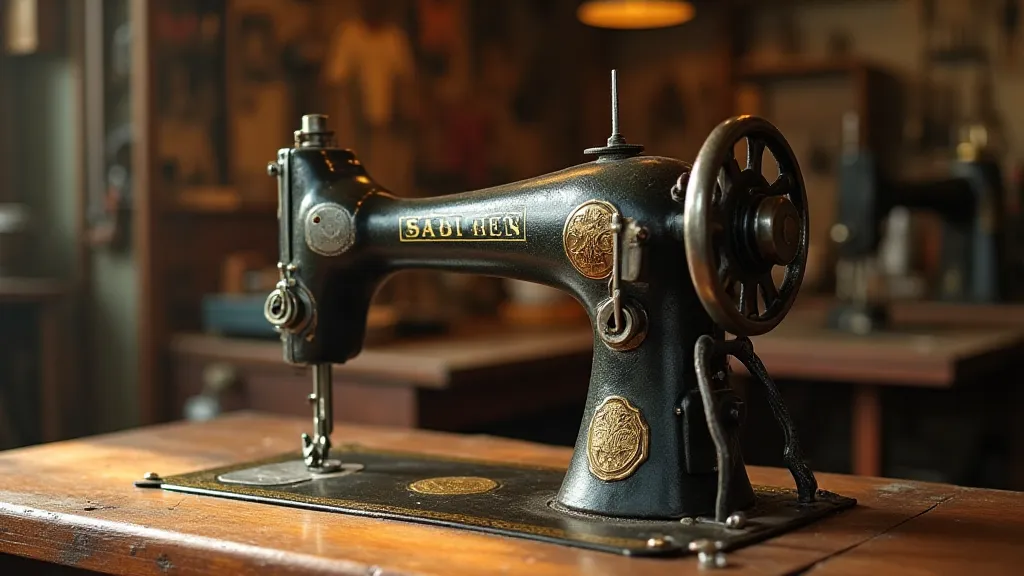
The Intangible Spirit: Reconnecting with the Past
It's easy to get lost in the technical details of repair – the correct type of oil, the precise pressure needed for tightening screws. But the most rewarding aspect of restoring antique Singer sewing machines is the feeling of reconnecting with the past. It’s about recognizing that these machines are more than just inanimate objects; they are vessels of history, embodiments of human ingenuity, and witnesses to countless stories. The stories these machines hold are not just about creation; they are often about the challenges faced by the families who relied on them.
The rhythmic click and whir of a Singer's mechanics aren't just sounds of operation; they're echoes of generations past. Imagine the dressmaker diligently crafting garments, the farmer's wife mending clothing for her family, or the small-town theater group putting together elaborate costumes—each stitch a testament to human resilience and creativity. These machines weren’t just tools; they were companions, confidantes, and essential contributors to the fabric of countless lives. If you’re facing issues with stitch formation, a deeper dive into troubleshooting a Singer 201-2 might be helpful.
When a long-dormant Singer awakens – when the flywheel begins to turn smoothly, when the needle begins to stitch a perfect line – it’s a moment of pure magic. It’s a feeling of having breathed life back into a piece of history, of having honored the legacy of the people who created and used it. You can almost hear the echoes of laughter, the murmur of conversations, the rhythmic hum of creativity that once filled the rooms where these machines once stood. Understanding the complexities of certain models, like the Singer 99K, can sometimes require meticulous attention to rebuilding the timing mechanism – a process demanding precision and patience.
Beyond Restoration: A Collector's Perspective
While restoring a Singer is deeply satisfying, collecting these machines offers another avenue for appreciating their significance. Collectors often specialize – some focus on specific models, others on particular eras, and still others on the original accessories and marketing materials. The hunt for rare parts, the research into manufacturing dates, and the sharing of knowledge with other enthusiasts all contribute to a deeper understanding of these remarkable machines. The value isn’t solely financial; it’s the intangible value of preserving a piece of industrial heritage. Collectors often dive deep into the mechanical intricacies of individual models. For instance, a dedicated enthusiast might focus on how to precisely replace the bobbin case on a Singer 46-16.
The world of antique Singer sewing machines isn’t just about acquiring beautiful objects; it’s about becoming a caretaker of history, a guardian of craftsmanship, and a participant in a community that cherishes the stories embedded within these remarkable machines. Many collectors become experts in identifying original components, recognizing subtle variations in design, and tracing the lineage of specific models. They become living encyclopedias of Singer history, eager to share their knowledge and passion with others.
The appreciation of antique Singer sewing machines extends beyond mere ownership; it’s a recognition of the dedication and artistry that went into their creation. It’s a celebration of the ingenuity of the engineers and the skill of the laborers who brought these machines to life. It’s a tribute to the countless individuals who relied on these machines to earn a living and create beautiful, functional items. It is an experience rooted in respect for the history of innovation and the enduring power of human creativity.
Consider the marketing materials from the era—the vibrant advertisements showcasing the benefits of home sewing, the elegant catalogs detailing the latest models, the detailed instruction manuals guiding users through the intricacies of machine operation. These materials provide a fascinating glimpse into the social and cultural context in which these machines were created and used.
